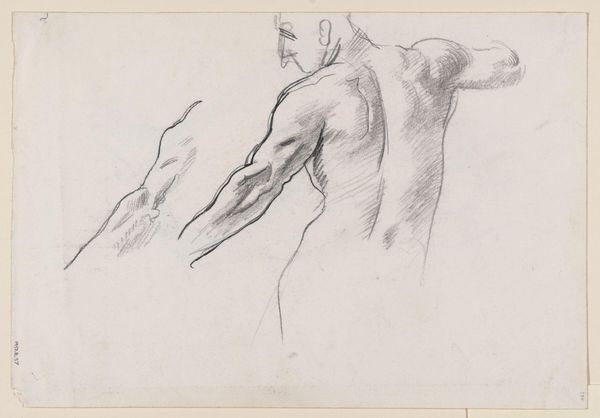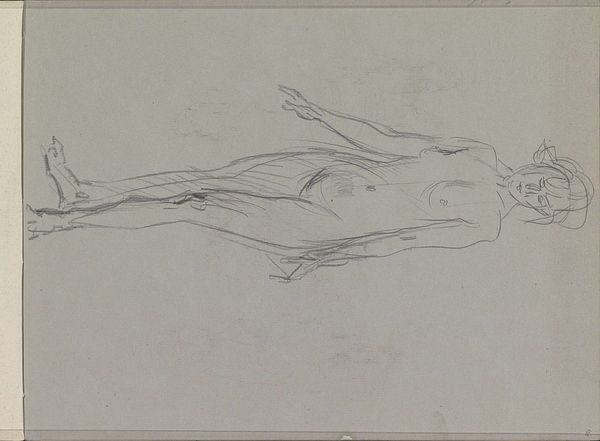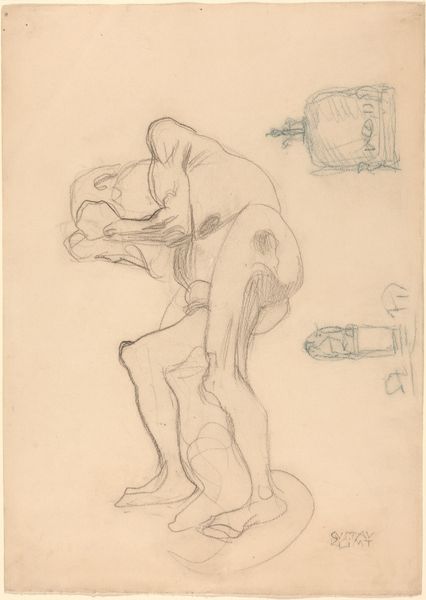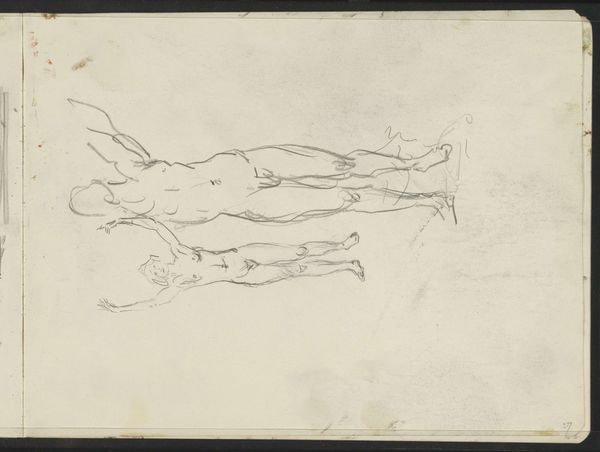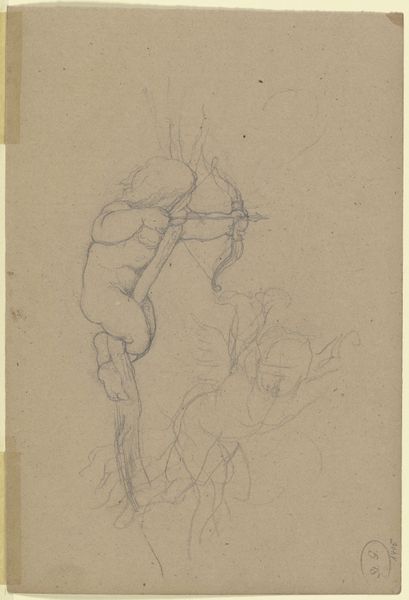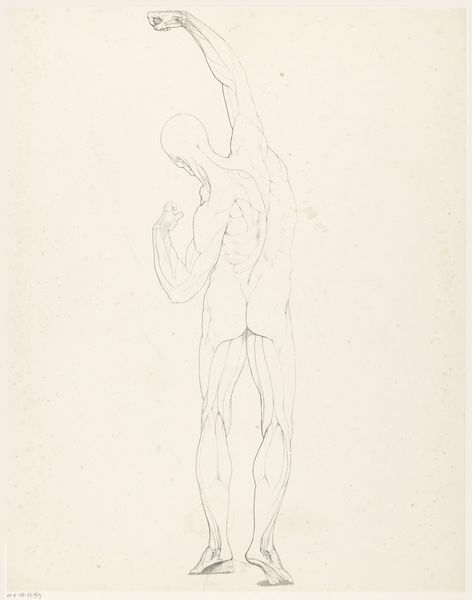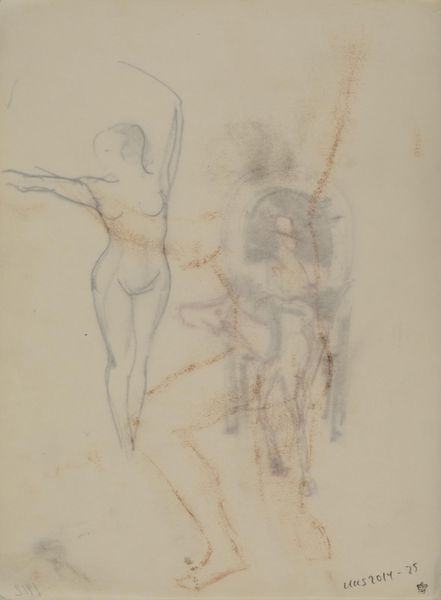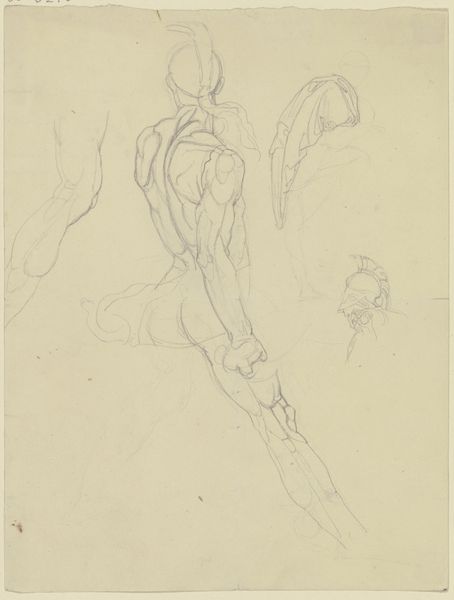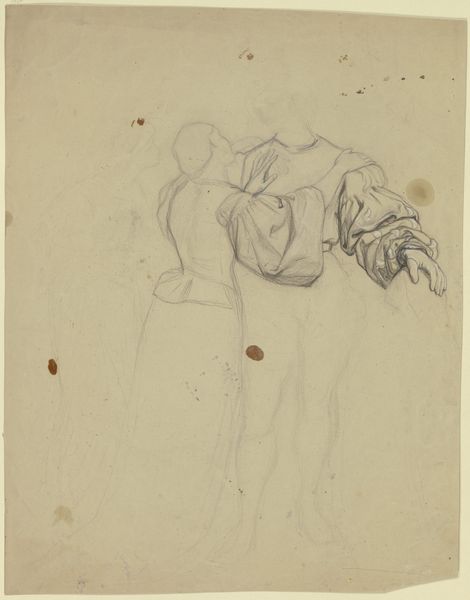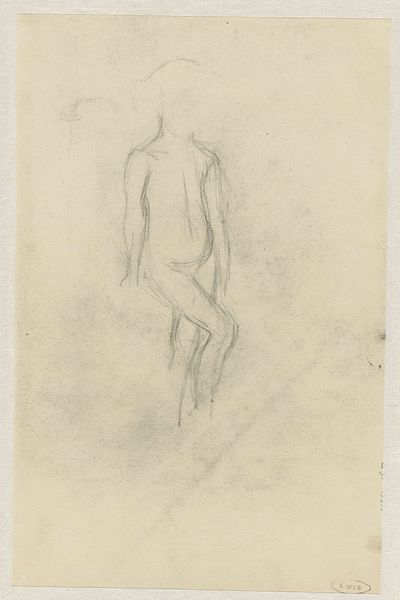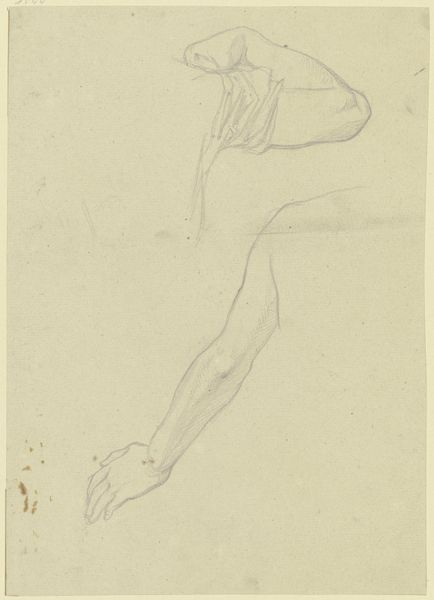
Männlicher Akt mit seitlich ausgestreckten Armen und nach links gesenktem Kopf (Kruzifixus_), daneben Beckenknochen
0:00
0:00
drawing, paper, dry-media, pencil
#
portrait
#
drawing
#
16_19th-century
#
classical-realism
#
paper
#
dry-media
#
geometric
#
pencil
#
history-painting
#
academic-art
Copyright: Public Domain
Curator: We’re looking at "Männlicher Akt mit seitlich ausgestreckten Armen und nach links gesenktem Kopf (Kruzifixus_), daneben Beckenknochen"—"Male Nude with Arms Extended Sideways and Head Lowered to the Left (Crucifix), next to Pelvic Bones." It’s currently held at the Städel Museum. Editor: My first impression is a feeling of anatomical study meets profound vulnerability. The pose certainly evokes a crucifixion, but the visible bones, rendered in pencil on paper, suggests something far more clinical. Curator: Precisely! The materials really speak to that dual purpose. This drawing, using pencil and other dry media on paper, likely functioned as both an academic exercise and perhaps a preparatory sketch for a history painting, in line with 19th-century academic art traditions. The paper itself hints at mass production, doesn't it? Editor: Good point! I immediately think of the academies. What sort of institutional structure would have allowed the creation, use, and preservation of an object like this? Who was making these choices, preserving this… suffering, really. Was this a tool for instruction or self expression? Curator: A key part of understanding academic art is recognizing the production and standardization of knowledge around the human body. The act of drawing like this would hone an artist's skill in accurately representing anatomical form. Pencil allowed a relative easy medium for correcting errors, as they build skills. Editor: Yes, it brings up some fascinating questions about artistic training and the way academies influenced visual culture. We’re seeing this body displayed in a very particular way, a way that both respects and almost… objectifies the human form through a sort of academic lens. But I can't stop focusing on how such exercises became the cornerstones of major historical and religious paintings of the era. Curator: It shows us how these studies could transcend mere anatomical renderings and evolve into powerful expressions loaded with political and cultural weight. These visual cues—body position, line, visible ribs, were eventually canonized, so this is an early experiment of this canonization process, for better or for worse. Editor: Thank you. Looking closely, the blending of artistic pursuit and objective analysis certainly challenges how we interpret art. Curator: Absolutely. It forces us to confront art's production and purpose within both academic and broader social contexts.
Comments
No comments
Be the first to comment and join the conversation on the ultimate creative platform.
